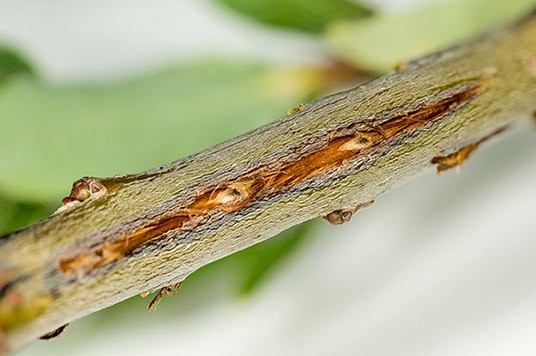Cicadas: how to recognise damage?
Cicadas produce rows of spots on leaves, fruit and flowers. This considerably reduces the quality of the end product. In case of a serious plague, the leaves may completely discolour and die off. Cicadas can be recognised by their light green colour. In some cases, they can damage the leaves or tips of your plants by sucking sap out of them.

How to prevent (further) damage?
Most cicadas are eaten by various groups of animals. These include birds, reptiles, amphibians and small mammals. Spiders, bugs and braconid wasps also hunt cicadas. Braconid wasp larvae eat the eggs, the nymphs and the adult cicadas. An egg is laid inside the prey, after which the wasp larva eats the victim from the inside out.
About cicadas
Cicadas are usually green. An adult insect is two to three millimetres long. A female cicada can lay up to 50 eggs in her life. These eggs are white, kidney-shaped and 0.6 millimetres long. These eggs are laid in leaf veins and stems, where they cannot be seen with the naked eye.



